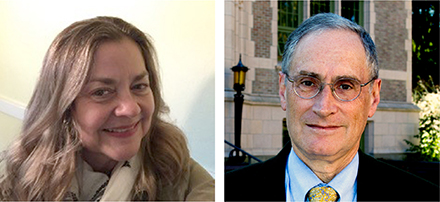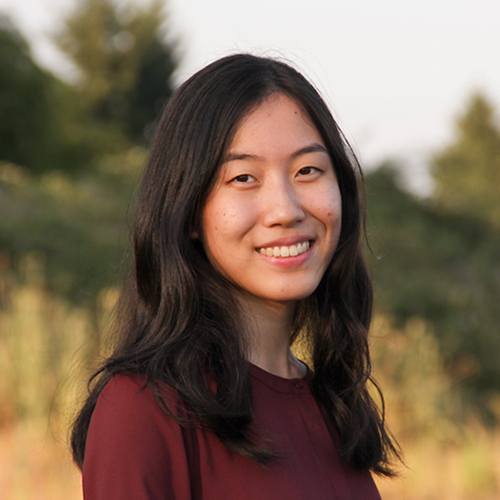Ancient coins. An Italian Renaissance painting. A piano composition. A Sanskrit grammar text. Ask a dozen humanities faculty to share a meaningful artifact, and you’ll get a dozen different responses. Ask them to talk about their artifact, and you have the makings of a course.
Or at least part of a course — Humanities 201 — offered by the UW College of Arts & Sciences. The new online course, an introduction to the humanities, features faculty discussing artifacts, describing their specific field within the humanities or related arts disciplines, and explaining why they were drawn to that field. Related readings and dozens of small assignments supplement the faculty videos.
Michael Shapiro, the College’s divisional dean for the humanities, has been advocating for an introductory humanities course for years. “I passionately believe that exposure to the humanities enhances the education of every student at the University, whatever their major,” says Shapiro, who developed the course with Frances McCue, senior lecturer in the Department of English. “There are so many aspects of life where it is useful to understand that there isn’t just one way of looking at things. Once you accept that, you’re in the humanities.”

Students enrolled in the course represent a wide range of majors, from biology to engineering to geography to art history. Shapiro and McCue are thrilled to introduce them to a humanist perspective, which is valuable regardless of one’s chosen field.
“The humanities offer us experiences that immerse us in culture, language, text, history, and civilization, as well as different ways of thinking and acting in really complex situations,” says McCue. “By offering students the chance to read deeply, write well, think in a curious and clear manner, and speak with articulation and focus, what we’re really doing is developing discernment, judgment, and perspective. I think that sometimes you can learn just as much about what it means to be alive by standing in front of a painting as you can by studying the human genome. Imagine if you did both, letting the two experiences cross-pollinate!”
Despite Shapiro and McCue’s enthusiasm, there are challenges in designing an online humanities course. Unlike courses focused on a specific skill or topic, the breadth of the humanities is difficult to capture. “It’s not simply a body of facts or a sequential mastery of skills,” says Shapiro. “An introduction to the humanities is uncharted territory. There are courses that will be called ‘Introduction to the Humanities,’ but more than not, they are an introduction to the Great Books. This course asks, ‘What does it mean to engage with the humanities?’ That is a different proposition.”
Working with senior instructional designer Maggi Kramm and instructional digital media manager Ryan Adams of UW’s Continuum College, Shapiro and McCue invited colleagues in the humanities and arts to prepare online videos for the course. Without exception, faculty were enthusiastic about participating. By sharing their personal journeys as well as meaningful artifacts, they make the humanities accessible and, well, human.
When faculty talk about their lives and their academic areas of focus, students see that the faculty’s interests and lives are intertwined.
“Don’t we all connect to stories, people’s experiences? To the parts of each other that inspire us to learn?” asks McCue. “When faculty talk about their lives and their academic areas of focus, students see that the faculty’s interests and lives are intertwined.”
In one video, French professor Maya Smith admits to struggling with language immersion during an early study abroad experience, until the language finally clicked in an “aha” moment. In another video, creative writing professor Shawn Wong shares that when he decided to be a novelist, he “realized almost immediately that I was the only Asian American writer I knew in the entire world.” Many of the featured faculty hadn’t imagined ending up in academia. “Hearing their stories enables students to see a bit of themselves in what these people have accomplished,” says Shapiro. “What they all have in common are enthusiasm and passion for their subject matter.”
The course encourages students to make their own discoveries through a humanist lens. Like the featured faculty, students are asked to choose an artifact with personal meaning and — through an online presentation — share it with their classmates. Artifacts have included video games, the 1936 shell raced by the Husky men's crew team, Darwin’s On the Origin of Species, a chicken adobo recipe, a Japanese painting, and Yves Saint Laurent’s famous Mondrian dress. The students explain not only what their artifact is, but who made it, when and why it was made, and whether it has been the subject of scholarly study. In the process, they discover that everything around them has a cultural and historical context. Every artifact reveals something about the world in which it was created.
Shapiro and McCue hope the message sticks, regardless of a student’s academic major or future career.
“Thinking about language, literature, and history helps us experience things in a nuanced way,” says Shapiro. “The world is not black and white. The humanities help us see it not just in shades of grey, but in color.”
More Stories

Exploring Connections Through Global Literary Studies
The UW's new Global Literary Studies major encourages students to explore literary traditions from around the globe and all eras of human history.

What the Sky Teaches Us
Brittany Kamai, an astrophysicist with knowledge of Pacific Islanders' Indigenous navigation using the sky, is teaching a new UW course, Pacific Indigenous Astrophysics.

Two Majors, Complementary Skills
Elizabeth Xiong (2024), a double major in art history and computer science, shares how she gained different and complementary skills from each major.